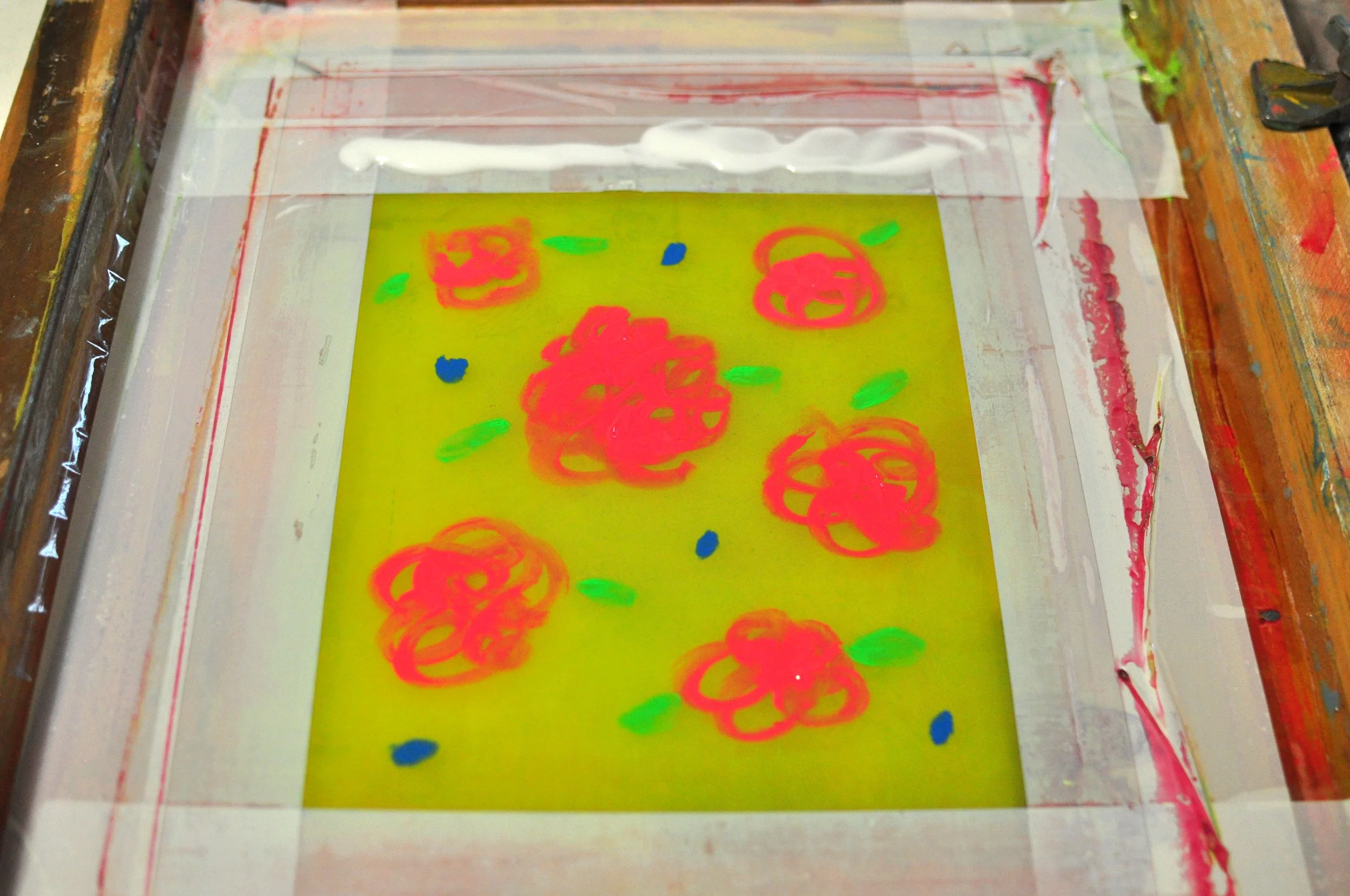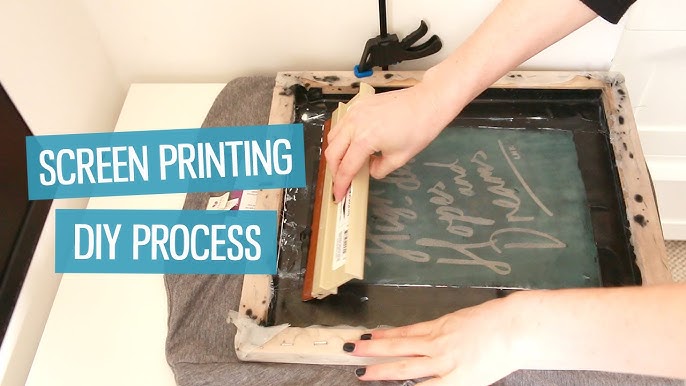ChatGPT said: 10:9 Design Screen Printing Texas: pricing explained
Discover the Numerous Kinds Of Screen Printing Techniques for Your Following Job
Screen printing provides a diverse array of strategies that can enhance any type of imaginative job. From conventional approaches like serigraphy to contemporary developments such as direct-to-garment printing, each strategy has its one-of-a-kind advantages. Specialized choices, consisting of metal and environment-friendly inks, present much more possibilities. Understanding these methods can substantially affect the last outcome. The obstacle lies in selecting the most appropriate technique for certain demands and wanted effects. What elements should one consider?

The Essentials of Screen Printing
Screen printing might seem complicated, it is fundamentally a straightforward process that entails moving ink through a mesh screen onto numerous surfaces. The method starts with the creation of a stencil, which specifies the layout to be printed. This stencil is connected to a mesh screen, generally made from polyester or nylon. When the stencil is in area, ink is related to the screen and pressed with the mesh making use of a squeegee, resulting in the preferred pattern being published on the underlying material.
Screen printing can be carried out on a broad array of substrates, consisting of paper, textile, and plastic, making it a versatile choice for various jobs. The process permits for detailed layouts and vivid shades, making it prominent in sectors such as fashion, advertising, and art. Recognizing these essentials furnishes people with the foundational understanding needed to check out advanced methods in screen printing.
Typical Screen Printing Techniques
Typical screen printing techniques have actually been used for centuries, protecting the craftsmanship and artistry of this technique. This strategy utilizes a mesh screen to transfer ink onto a substratum, such as textile or paper, enabling for resilient and vibrant styles. The procedure begins with producing a stencil, which blocks particular locations of the screen to manage where the ink will certainly be applied.
One prominent strategy is serigraphy, usually utilized for artistic prints and minimal versions. One more is using water-based inks, which are eco-friendly and provide a soft feeling on fabrics - 10:9 Design Texas. In addition, conventional techniques can consist of hands-on printing, where craftsmens apply ink with a squeegee, making certain accuracy and focus to information
These methods remain valued in the sector for their responsive high quality and the distinct appearances they generate, interesting both designers and customers who appreciate the heritage of screen printing.
Digital Screen Printing Innovations
As the demand for faster manufacturing and customization in the printing industry has surged, digital screen printing advancements have arised as a game-changer. This innovation mixes conventional screen printing techniques with electronic processes, permitting fast prototyping and intricate styles that were formerly tough to attain. One considerable improvement is the introduction of direct-to-garment (DTG) printing, which assists in high-quality, full-color prints on various textiles without the need for displays. Furthermore, innovations in ink formulas have actually led to eco-friendly options that preserve vibrant shades while decreasing ecological impact. Using automated systems better enhances manufacturing, lowering labor prices and improving accuracy. These technologies not only satisfy small batch orders and customized designs but also permit quicker turnaround times, making them suitable for services concentrated on conference consumer demands in a busy market. Digital screen printing, subsequently, stands for a vital evolution in the domain name of printing techniques.
Specialized Screen Printing Methods
Discovering specialty screen printing approaches discloses a varied selection of techniques that push the boundaries of imagination and capability in the printing industry. Among these, glow-in-the-dark inks offer a distinct aesthetic effect, making designs come alive in low-light problems. Metal inks, recognized for their shimmering finish, add a touch of luxury to published products. Another ingenious technique is discharge printing, which removes dye from the textile rather than including ink, causing a soft, classic feeling. High-density printing develops an elevated texture externally, boosting tactile engagement. In addition, water-based inks are getting appeal for their dynamic shades and lowered ecological impact. Each of these specialty techniques deals with specific style demands, allowing artists and brand names to create standout products that resonate with their audiences. By leveraging these methods, services can raise their screen printing projects to brand-new heights, guaranteeing remarkable impacts.
Eco-Friendly Screen Printing Options
Environment-friendly screen printing alternatives are getting grip as the sector shifts towards sustainability. Sustainable ink choices and making use of biodegradable materials are essential elements in minimizing the ecological effect of the printing process. By taking on these practices, screen printers can add to an extra sustainable future while maintaining top quality outcomes.
Sustainable Ink Selections

Biodegradable Products Use
As the screen printing industry advances, the consolidation of biodegradable materials is coming to be increasingly essential for eco aware methods. Designers and producers are currently exploring inks and substrates made from all-natural, renewable energies that decompose more efficiently than typical equivalents. These biodegradable choices minimize plastic waste and minimize environmental effect, straightening with the expanding demand for sustainable products.
Usual examples include water-based inks and natural cotton textiles, both of which reduce harmful chemicals and advertise eco-friendliness. Brand names that adopt these products usually improve their market charm, bring in customers who focus on sustainability. As recognition of ecological problems proceeds to climb, the shift in the direction of biodegradable products in screen printing is most likely to get energy, promoting a greener market criterion.
Selecting the Right Strategy for Your Task
Exactly how can one figure out the most suitable screen printing technique for a certain task? The decision depends upon several elements, including the product to be printed on, the intricacy of the design, and the preferred production volume - 10:9 Design contact. For instance, direct-to-garment printing is perfect for intricate layouts with numerous colors, while standard screen printing stands out for larger runs of easier graphics
Furthermore, factor to consider of the end-use of the printed product is necessary. For outside applications, strategies that provide durability and weather condition resistance, such as plastisol ink, might be chosen. Conversely, environmentally-conscious jobs may gain from water-based inks signs & print or biodegradable materials.
Ultimately, understanding the job's special requirements permits for an informed choice, making sure both aesthetic charm and practical durability. By assessing design complexity, product compatibility, and manufacturing scale, one can successfully select one of the most proper screen printing method to meet their job's objectives.
Often Asked Concerns
What Is the Background of Screen Printing?
Screen printing came from in ancient China around 1000 ADVERTISEMENT, progressing through Japan and Europe. By the 20th century, it came to be popular in business art and fashion, reinventing how styles were generated and dispersed around the world.

Exactly how Do I Prepare Artwork for Screen Printing?
To prepare artwork for screen printing, one should assure high resolution, use an ideal shade setting, produce different layers for each shade, and transform message to outlines, guaranteeing compatibility with the printing procedure and preferred end result.
What Materials Are Best for Screen Printing?
The very best materials for screen printing consist of high-grade inks, sturdy screens, and appropriate substratums like cotton, polyester, or blends. Additionally, utilizing appropriate emulsion and mops can boost the printing procedure and last outcomes.
Can I Screen Publish at Home?
Yes, screen printing at home is possible. With the appropriate products, arrangement, and methods, individuals can produce premium prints. Nevertheless, mindful consideration of workspace and tools is vital for effective results.

What Are Common Mistakes in Screen Printing?
Common mistakes in screen printing consist of improper exposure times, inadequate ink uniformity, imbalance of screens, inadequate cleaning of materials, and neglecting to evaluate prints. These mistakes can jeopardize the top quality and precision of the end product.
Screen printing might appear facility, it is basically an uncomplicated procedure that entails transferring ink through a mesh screen onto numerous surface areas. As the need for faster production and modification in the printing market has risen, electronic screen printing innovations have actually emerged as a game-changer. Exploring specialized screen printing methods exposes a varied array of strategies that press the limits of imagination and performance in the printing market. The finest materials for screen printing include high-quality inks, sturdy displays, and suitable substratums like cotton, polyester, or blends (10:9 Design reviews). Common blunders in screen printing consist of incorrect direct exposure times, insufficient ink consistency, misalignment of screens, not enough cleaning of materials, and disregarding to test prints